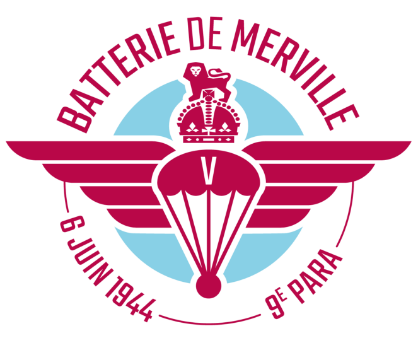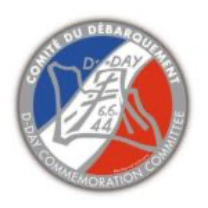Training of the 9th Para Bn.
Accueil » The Museum » The Battery » Training of the 9th Para Bn.
The faithful reconstruction of the Merville Battery
Let’s go back briefly: only two months remained from the time Lieutenant-Colonel Terence Otway developed his assault plan to the night of 5-6 June when he dropped for his mission. Only two brief months to prepare for the training he had planned for the success of his mission. It was all the more short, because for Terence Otway the key to the success of his plan was the faithful, life-size reconstruction not only of the battery but also of the Drop Zone and the terrain, right down to the smallest detail, even the 5 hectares of guns to be silenced.
The terrain was remodelled identically, like a model but on a scale of 1, on the basis of high-precision aerial photographs. The reconstruction was achieved in a record time of one week, showing that the engineering machines worked day and night.
Everything was reconstructed, from the pillboxes with their tubular frames and cladding to the anti-tank ditch, the double barbed-wire network, the minefields, the other blockhouses, the machine-gun nests and the anti-aircraft defence. It was a near-perfect replica.
Lieutenant-Colonel Terence Otway wanted to train his men with a near-perfect replica of the site so that they would already know it well enough to greatly increase stealth, speed and surprise.
This achievement was also made possible by the high-level relationships that Terence Otway forged during his military career. It was no mean feat to mobilise the logistical means essential for implementing his plan in a very brief period, once he had received the green light from Brigadier James Hill.
Once the site was ready to receive the 9th Battalion, it was placed under strict secrecy and access was strictly regulated.
Once the battery and its surroundings had been reconstructed with utmost attention to detail, the entire area was placed under heavy guard with the help of military and civilian police forces. Patrols were constantly on site and the civilian population was informed that live fire was allowed for the security personnel in the area. All access from neighbouring villages was also carefully controlled.
As the 9th Battalion took up its quarters, the pressure began to mount on all sides as the set-up indicated how very important this mission was. Moreover, the training conditions organised by Terence Otway brought them closer to their objective: they would be actively involved in a very dangerous mission and all that it implied.

Newbury, 40 km NNE of Bulford Camp as the crow flies.
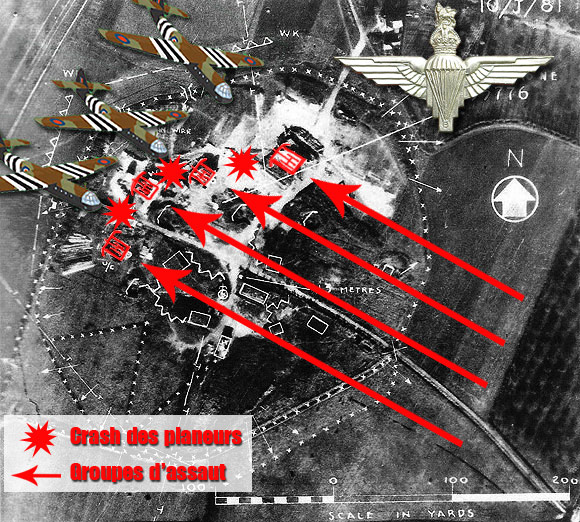
An assault plan based on surprise
The action plan
for D-Day
Faced with a heavily armed battery, which in Lieutenant Colonel Otway’s eyes soon took on the appearance of a fortress when he first discovered its purpose through the multiple aerial photographs very carefully displayed in a secret room at Intelligence Headquarters.
He quickly agreed with Captain Robert Gordon-Brown that a frontal attack would be suicidal. An assault from the rear seemed much more feasible. Nevertheless, the element of surprise soon proved to be of paramount importance for Lieutenant Colonel Otway. Much time was spent studying the situation, with photographs that were regularly updated.
To surprise and confuse the Germans in the Merville Battery, Lieutenant-Colonel Otway imagined three gliders crashing into the heart of the compound. For them to stop as quickly as possible, and for the airborne assault troops to leap from their flank clean onto the enemy, he planned to have the gliders arrive exactly between the four pillboxes so that their wings, breaking against the pillboxes, would stop them dead. 70 men would have to jump out of the gliders to create chaos and attack the Germans.
Before the calculated crash of the gliders, the scouts would have to carefully reconnoitre and prepare the positions chosen for the rest of the 9th Battalion’s forces with the utmost stealth. Several groups of scouts were to be dropped first. Once on the ground, they would then have to recover their equipment in the containers dropped with them.
One group of scouts would then have to open a passage through the minefields by marking it with white ribbons so that the paratroopers who had to break through the defences could in turn breach the deep barbed wire with Bangalore torpedoes, thus allowing the assault groups to attack the position in their turn. Other scouts had the job of marking the rendezvous point where the 9th Battalion would gather at the Drop Zone, as well as the Landing Zone for the five gliders that would carry the heavy equipment of the 9th Parachute Battalion.
Once the Albemarles carrying the scouts had taken off, the transports for the paratroopers of the 9th Battalion and the gliders had to follow.
Once at the rendezvous point, Lieutenant Colonel Otway’s 750 paratroopers were guided by the scouts, with their heavy equipment (Jeeps, mortars, machine guns, explosives, medical equipment, transmission equipment and flame throwers) to their position in readiness for the assault. They had to travel in the middle of the night, about 2,200 metres from the drop zone to the battery, with all their equipment. As soon as each glider was in position, the scouts had to guide the gliders assigned to enter the battery, using their transmitter beacons. Once the gliders had crashed inside, the Bangalore torpedoes would explode in sync, allowing the 4 assault groups (one per pillbox) to rush into position to fulfil their objective. The guns would have to be neutralised promptly, and the explosives transported for the purpose laid, as soon as possible.
Once the task was completed, the paratroopers of Lieutenant Colonel Otway’s 9th Battalion would have to treat their wounded, leave the scene as soon as possible, inform Headquarters of the success of their operation, and continue their mission.
For as we shall see later, neutralising the guns of the Merville battery was only the first of a whole series of missions.
This was the plan and it was now just a matter of hard training to ensure that the paratroopers of Lieutenant Colonel Otway’s 9th Battalion were in tip-top condition to do the job to which they were assigned. This is why Terence Otway was so keen to reproduce the Merville battery and its surroundings exactly, to achieve his objective.
The intensive training of the men of 9th Para.
An assault plan repeated a thousand and one times.
Lieutenant-Colonel Terence Otway’s paratroopers started by individually rehearsing their task. Both by day and by night, naturally.
Then, when Lieutenant-Colonel Otway considered that they were ready, a dress rehearsal, in which each piece of the puzzle would have to fit together for the plan to work properly, would be carried out.
But Lieutenant-Colonel Otway wanted his 9th Battalion paratroopers to memorise their mission, its precise timing and the nature of the terrain. Terence Otway wanted them to have such a thorough understanding of their subject that there would be no room for doubt. He wanted him to be able to operate almost with their eyes closed and to be on schedule every time.
Repetition followed repetition, with all the precision of an atomic clock.
Terence Otway wanted his 9th Battalion paratroopers to become formidable warriors so that they would be able to see their very perilous mission through and emerge victorious. And victorious they would be!



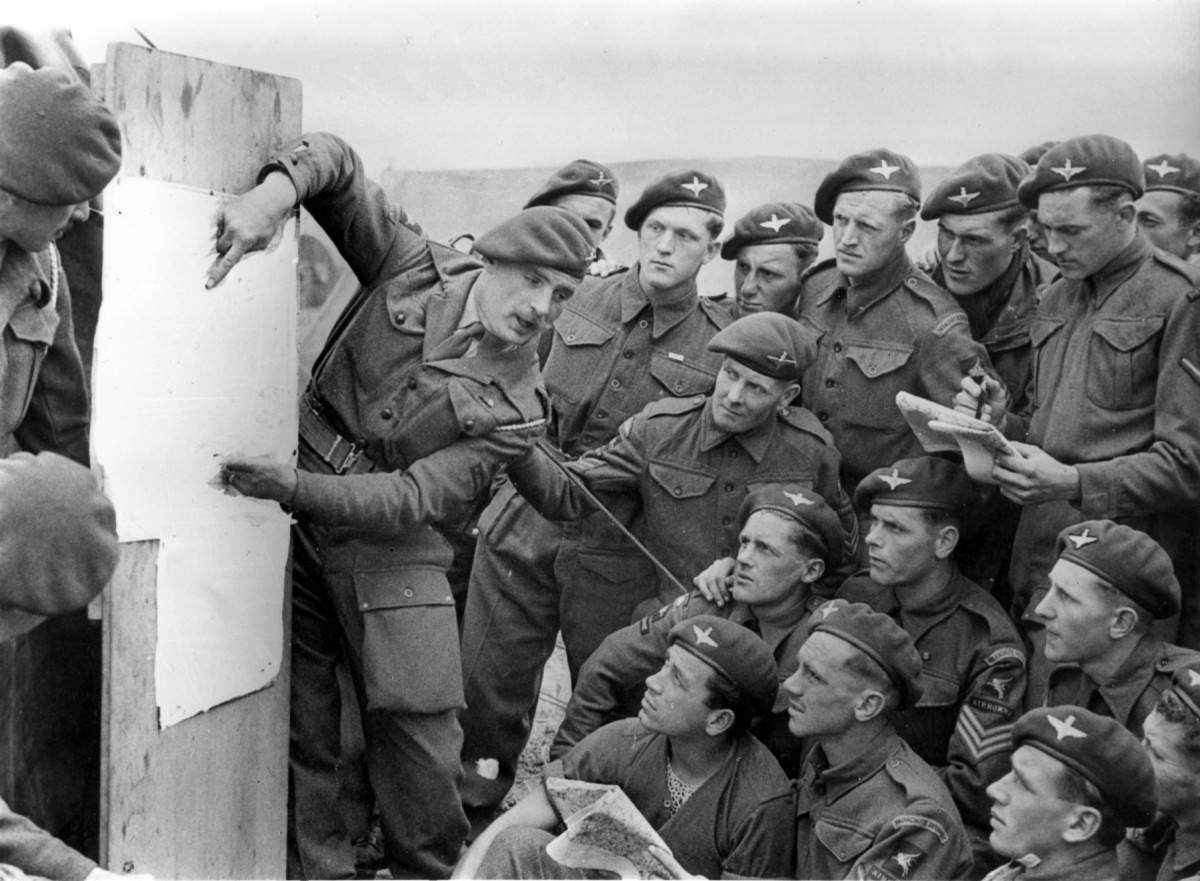
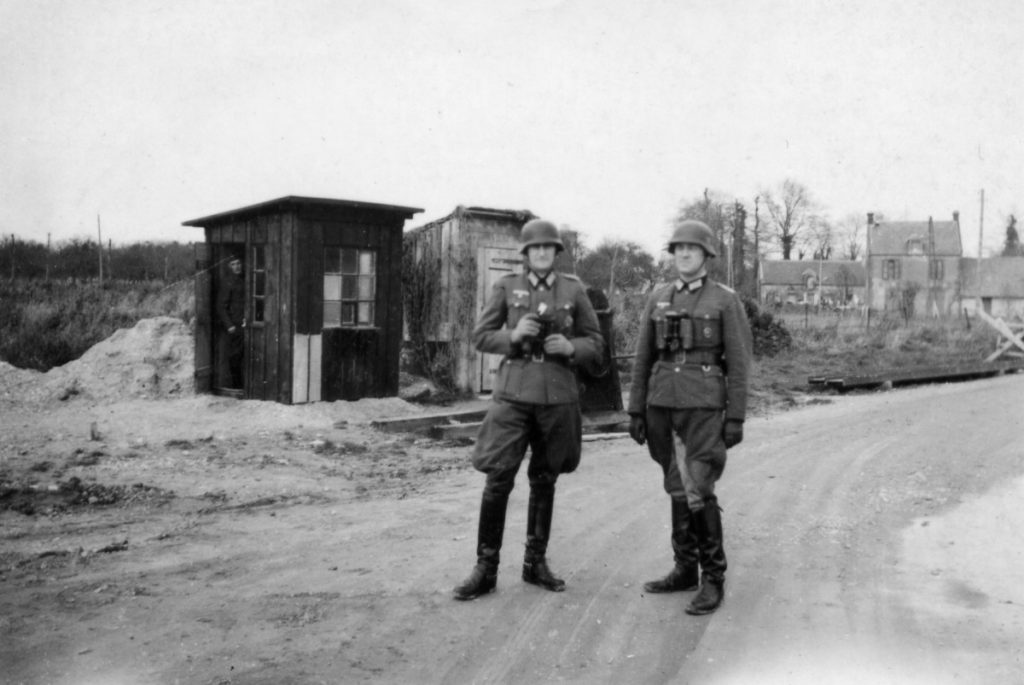
The designation of the target
Shortly before departure Lieutenant-Colonel Terence Otway told the 9th Battalion the name of the battery that they were to silence.
He told them again that this mission was a priority D-Day objective, of first importance for SHAEF, and that he was counting on them. His men, the paratroopers of the 9th Battalion, felt honoured to have been chosen for this vital mission. A great esprit de corps united them.
The final preparations
The transit camp just before the invasion
Transit camp near the Royal Air Force field. The invasion is coming! The camp is literally cut off from the rest of the world: absolute secrecy.
Every man prepares his own equipment. Each parachutist is free to select his own weaponry, the only condition being that the authorised weight must not be exceeded. In the end, about 30 kilos of equipment were taken.
Major-General Richard N. Gale comes to encourage his paratroopers in the 6th Airborne Division. Brigadier James Hill gives his Brigade his final recommendations as an experienced officer. Lieutenant-Colonel Otway also gives his final briefing.
D-Day is scheduled for the following day. 7,000 paratroopers of the 6th Airborne Division are to be dropped in just two hours. A fleet of 400 aircraft, mainly Dakotas, from Royal Air Force Groups 36 and 48, await them, along with the Glider borne 6th Airlanding Brigade with their gliders and towing aircraft.
The paratroopers head for their trucks, harnessed and equipped for the night before D-Day. The flight is expected.
And then the news comes. D-Day is postponed for 24 hours because of bad weather!

